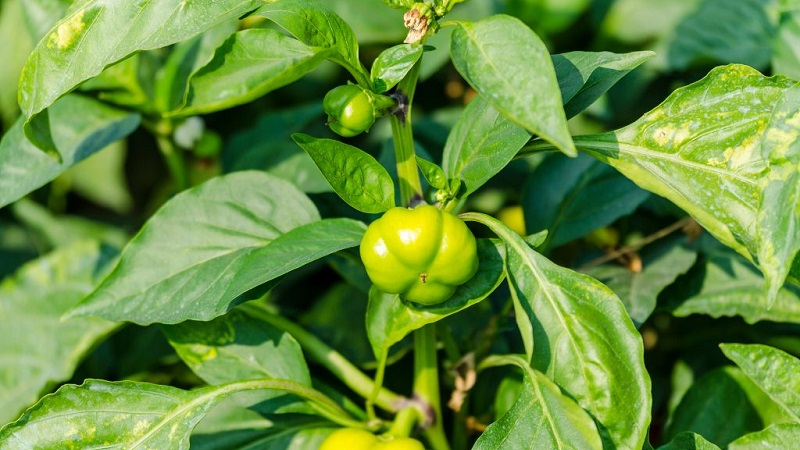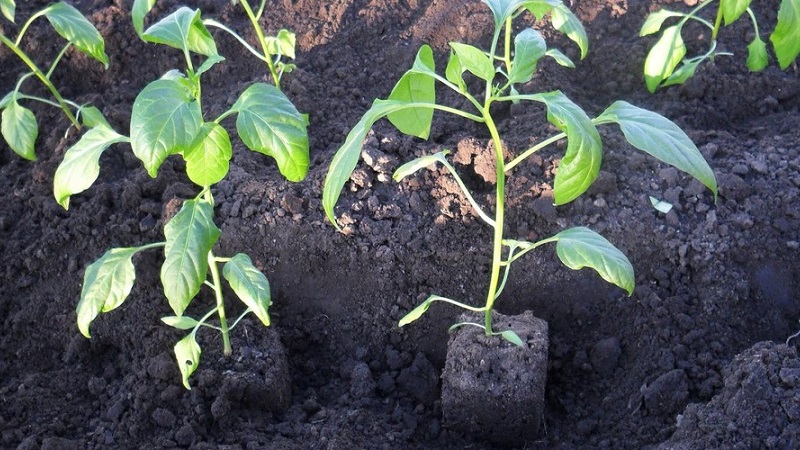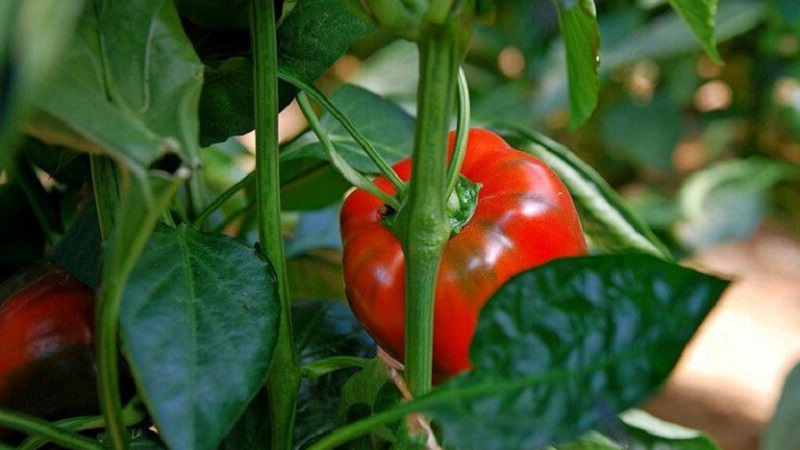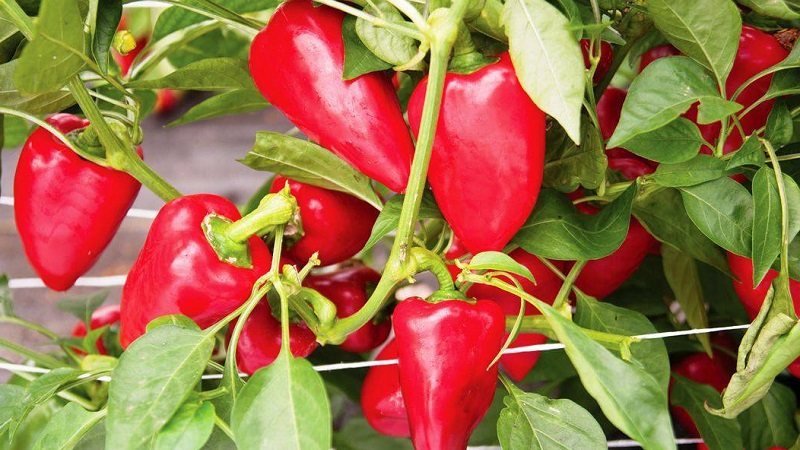Why peppers don't grow: possible causes of the problem and methods of solving them
Often, summer residents are faced with the fact that after disembarking in a greenhouse or on a warm bed, peppers do not grow, although they sprouted friendly shoots. The agricultural technology of this culture has its own subtleties, knowing about which farmers, even from a small plot, collect a high yield.
If the peppers have stopped growing for no apparent reason, it is important to take a number of measures, which we will discuss in detail in the article.
The content of the article
Why peppers don't grow
There are many reasons why vegetables do not grow or are not tied. Seedlings are affected not only by caring for them, but also by improper sowing. Salad (or Bulgarian) pepper is native to Latin America. This heat-loving plant experiences stress from various external factors.

If low-quality or empty seeds are selected for planting, then the plants will develop poorly... Attention is paid to picking and choosing a place on the site. Peppers do not like temperature extremes and shading, they need a large amount of moisture, regular feeding.
Why don't they come up
Seeds will not sprout if the soil and planting material are incorrectly selected... Plants love loose, neutral soil with an acidity of 5–7 pH. Such soil allows water and oxygen to pass well, as a result of which optimal conditions are created for seed germination. Himself planting material buy in a specialty store.
To prepare soil at home, take in equal parts:
- ready-made humus or compost;
- sod land;
- leaf humus;
- peat.
After disinfection, the grains are soaked in a nutrient solution for four hours., then germinate. The seeds are not stored for a long time, otherwise they will not sprout. If the recommendations are followed, the first shoots will appear in 5-10 days.
Reference. To accelerate the germination of seeds, they are pre-etched in potassium permanganate.
It is important to accurately determine the sowing time for seedlings... Early varieties are sown 65 days before picking in open ground, later varieties - 75 days before.

Seedlings do not grow - reasons
After the emergence of seedlings, the boxes with seedlings are rearranged in a well-lit place with a temperature of + 22 ° C. If the seedlings grow poorly, then the temperature regime is not observed. Pepper is a heat-loving plant that does not like drafts.
Slows down crop growth and overdried soilif you keep boxes with seedlings next to the battery. In such soil, the seeds that have hatched dry out.
Wrong pick is another reason for poor growth... Peppers have a delicate root system, so they are not planted in a common box, but in separate containers. When diving, seedlings often die. If the seeds are planted nevertheless in a common box, then they are transplanted by the transfer method. The roots are not deeply buried - this will slow down the growth of seedlings.
Seedlings are regularly watered with warm water: cold will only stress the bushes.
Why did they ascend, but do not grow
One of the reasons for this is a violation of the temperature regime.... During the day, at the seedling stage, the temperature is maintained at least + 22 ... + 25 ° C, at night - not lower than + 10 ... + 12 ° C.
Seedlings are fertilized regularly and watered, not allowing the earth to dry out.
Causes of problems with the growth of pepper
Common causes of cultural retardation:
- low air temperature and drafts;
- infertile soil;
- picking errors;
- constant temperature drops;
- deepening of seedlings during transplantation;
- irregular watering;
- root damage during transplantation;
- irregular feeding;
- wrong time to dive;
- too dry air in the greenhouse;
- poor lighting and short daylight hours.
The culture is dived into the ground by the transshipment method, the roots are also not deeply buried... Otherwise, the plants will spend their energy on growing adventitious roots on the lower part of the stem and green mass, and not on the fruits themselves. As a result, the yield will decrease.
Important! The pepper is created as less stress as possible so that it better adapts to new conditions.
If the plant is too deep, wait for the advent of adventitious roots, and in the next season such a mistake is not repeated.

Agrotechnical errors
This garden crop is often not fed... An oversupply of nutrients is just as harmful as a lack of them. Excess superphosphate leads to increased growth of the root system, as a result, the plant lags behind in development. To reduce the concentration of fertilizers, increase the frequency of watering.
Before planting in a permanent place, ready-made humus is introduced into the soil. Thereafter peppers are fed several times per season:
- two weeks after the pick - mullein infusion;
- at the end of June, when the culture blooms - wood ash, diluted in water and infused for three days;
- after three weeks - mineral fertilizers with potassium and calcium (will increase the resistance of plants to diseases);
- at the fruiting stage, every 1.5 weeks - complex fertilizers.
External factors
Environmental factors also affect plant growth retardation.:
- drought;
- excess moisture;
- lack of sunlight;
- pests;
- illness;
- temperature drops;
- drafts.

Especially often a slowdown in development occurs due to a lack of moisture.... After each watering, the soil is loosened and mulched. In the greenhouse, the bushes are moistened after 1-2 days, in the open field - after 3-6 days. In hot weather, the procedure is carried out every day, morning or evening.
Read also:
The best varieties of sweet peppers for outdoor use
Diseases and pests
In high humidity, plants are threatened by white or gray rot. Peppers can be infected with soil diseases:
- late blight;
- fusarium;
- verticillosis.
The danger is pests:
- aphid;
- whitefly;
- scoop;
- thrips;
- Colorado beetles;
- bears.
To combat them, use insecticides ("Bankol", "Thunder", etc.) and biological products.
Reasons for greenhouses and greenhouses
The growth of bushes slows down in the greenhouse due to drafts, too dry air or too much humidity. Therefore, the structures are ventilated after watering, and the beds are covered with transparent film in cold weather.
Excessive humidity leads to the appearance of mold and rot, slugs.

For open ground
A common reason for stopping the development of vegetables in the beds is sharp temperature drops, so gardeners install arcs, cover the plants with protective material or transparent film. It must be removed in hot or windy weather during the day and pulled over the night.
Important! Outdoors, peppers are more susceptible to pest attacks.
What to do
To combat the lack of moisture, after each watering, the aisles are loosened, mulch is added... For intensive growth at each vegetation stage, the crop is fed with organic and mineral fertilizers. In cold weather and in unfavorable climates, the bushes must be covered with a film.
At the first sign of disease and pests plants are treated with special preparations.

Preventive measures
To prevent the problem, it is important to adhere to the recommendations for the cultivation of vegetables.starting from the moment of sowing. The stronger the seedlings, the faster the plants will acclimate after being dived into open or closed ground.
Any cause of growth retardation is removed, the bushes are sprayed with biostimulants. Follow the rules of crop rotation: the best predecessors of peppers are melons, legumes, onions, cucumbers, cabbage, zucchini.
Conclusion
Peppers are a capricious culture for the Russian climate, but breeders have bred many early ripening varieties and hybrids that are suitable not only for the middle lane, but also for the Urals and Siberia.
For the cultivation of vegetables, they properly prepare the soil, process the seeds, provide a consistently high temperature and optimal humidity, and protect the bushes from drafts. Compliance with the features of agricultural technology will allow you to get a stable harvest of sweet peppers on your site.